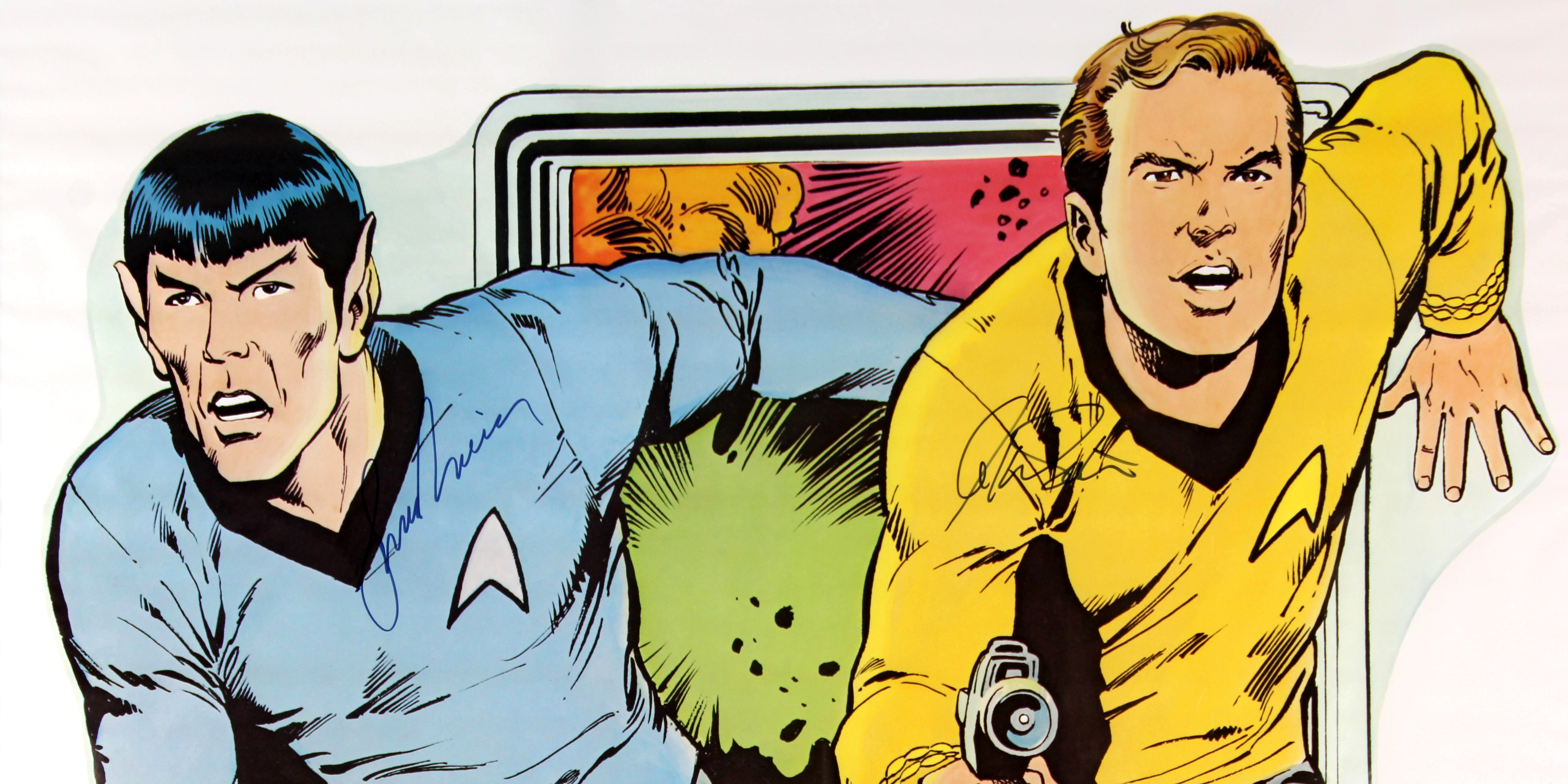The second in my growing collection of Peter Pan record-and-comic sets features the original stories Passage to Moauv and The Crier in Emptiness, and both are good original tales that are consistent with the themes and values established in the original series. On that measure, this is a better outing than the first set I covered. (That article also gives some background on Peter Pan Industries.)

The artwork in the read-along comic is colourful and mostly accurate, as in the other set, but it strikes me as even more dynamic. The artists were really working to boost the drama of the tales.


Here are the two stories. You can start the audio and flip through the scans in pace with the story — just as kids did in 1979 when this set was released.
The Crier in Emptiness
A boring mapping mission is interrupted by strange musical sounds which start as minor annoyances but quickly progress to full-out threats. The story was reportedly written by Alan Dean Foster, who added a number of sophisticated elements that raise the tale above basic kids’ fare. These include using the shuttle to provide respite for the crew, who take to it in shifts to escape the sounds, and the introduction of a creature who exists as sound only and, it seems, is simply trying to communicate. There is also a nice bit at the end in which Uhura says to no one in particular “I heard a voice, crying in the wilderness” — a biblical reference to either Isaiah or John.
Passage to Moauv
The Enterprise is on an important diplomatic mission — to deliver an ambassador’s pet. The crew grouches about the assignment but both the Federation and the Klingons are trying to get the strategic planet Moauv to join its alliance, so this babysitting task could be critical. This is an interesting premise, reminiscent of Elaan of Troyius, but you are reminded this is a story for kids when the pet escapes and that somehow causes the crew to begin to meow and growl.
Lieutenant M’Ress, from the animated series, makes a welcome appearance but it is odd that she does not look like a cat. Peter Pan apparently only had rights to the likenesses of Kirk, Spock and McCoy (which is why Uhura is a blond white woman, for example) but it’s still surprising the company didn’t give its new M’Ress (in the second photo) fur, a tail, or cat ears.


Peter Pan cashed in on the excitement around Star Trek: The Motion Picture by using movie images on the covers of the albums it issued in 1979, even though all but two of its 11 stories were written before the movie premiered and feature TOS-era comic artwork. The wrapping of TOS stories in movie imagery is a little jarring to adult fans but probably did not bother the kids who dropped allowance money on these entertaining stories and comic books.

My pursuit of more record-and-comic sets continues.


















One response to “Peter Pan spins tales of new life and interstellar diplomacy”
[…] Collectingtrek.ca has added a new review for ‘s “Star Trek Book & Record Set”: […]
LikeLike